Introduction
- Mental health means the cognitive and the wellbeing of an individual.
- This is critical in dictating how people think, feel and behave in different situations.
- This can also mean the individual’s ability to balance different activities in life towards achieving a psychological resilient life.
- The mental health has taken a center stage with World of Health Organization recognizing the state of wellbeing as a right to every citizen (Meadows, Singh & Grigg, 2007).
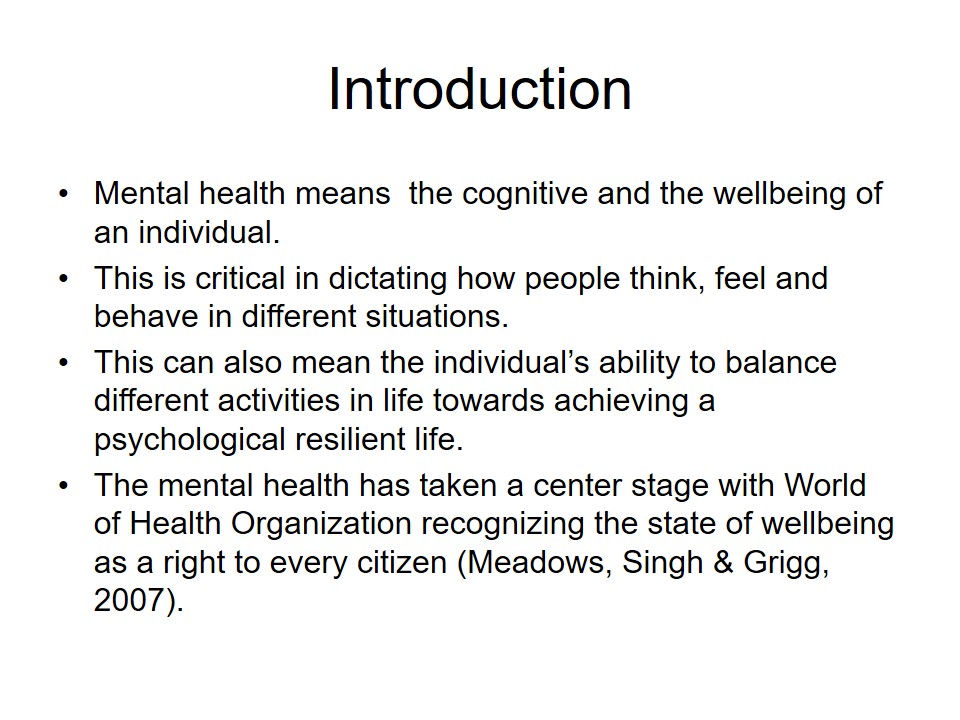
Characteristics of mental health workforce
- The mental health workforce is experiencing some problems (Mental Health Consumer Outcomes Task Force, 1991).
- There major difficulties in supply and retention of the workforce (Australian Indigenous HealthInfoNet, 2011).
- Majority of the nurses in the public mental health care are ageing (Beyondblue, 2010).
- The number of the mentioned nurses has remain unchanged overtime (Community Services & Health Industry Skills Council, 2010).
- The nurses are also subjected to working in longer hours (National Health Workforce Planning & Research Collaboration, 2011).
- For overtime, the profession has lacked mentorship hence barring professional development (National Mental Health Education and Training Advisory Group, 2002).
- Many of the nurses offering mental health care are evenly distributed and work in metropolitan areas (Hayes, Bull, Hargreaves & Shakespeare, 2008).
- The mental health psychiatrists work in public, private but few work in the non Governmental organizations (Human Capital Alliance, 2006).
- The distribution of psychiatrists is mainly in favor of the cities (Malhi, et al, 2003).
- Majority of the psychiatrists are clocking the age of retirement (McCrindle Research, 2006).
- There is an alarming scarcity of psychiatrists in Australia (McGrath, 2004).
- There are predictions of psychiatrists shortage and the wholly mental health workforce (Meadows, Singh & Grigg, 2007).
- By 2025, all the psychiatrists practicing will be facing retirement (Mental Health Consumer Outcomes Task Force, 1991).
- The main challenge has been recruiting psychiatrists to work in the rural areas (Mental Health Workforce Advisory Committee, 2008).
- The training is extremely costly and a lot of funds are needed to facilitating training (National Health Workforce Planning & Research Collaboration, 2011).
- Socio-economic and geographically disadvantaged areas continue to be underserviced (National Mental Health Education and Training Advisory Group, 2002).
- The mental health are psychiatrists are increasingly being dominated by old professionals (Willis, Reynolds & Kelleher, 2009).
- The general practitioners of mental health also need to be increased (The University of Melbourne, Centre for Health Policy, Programs and Economics, 2011).

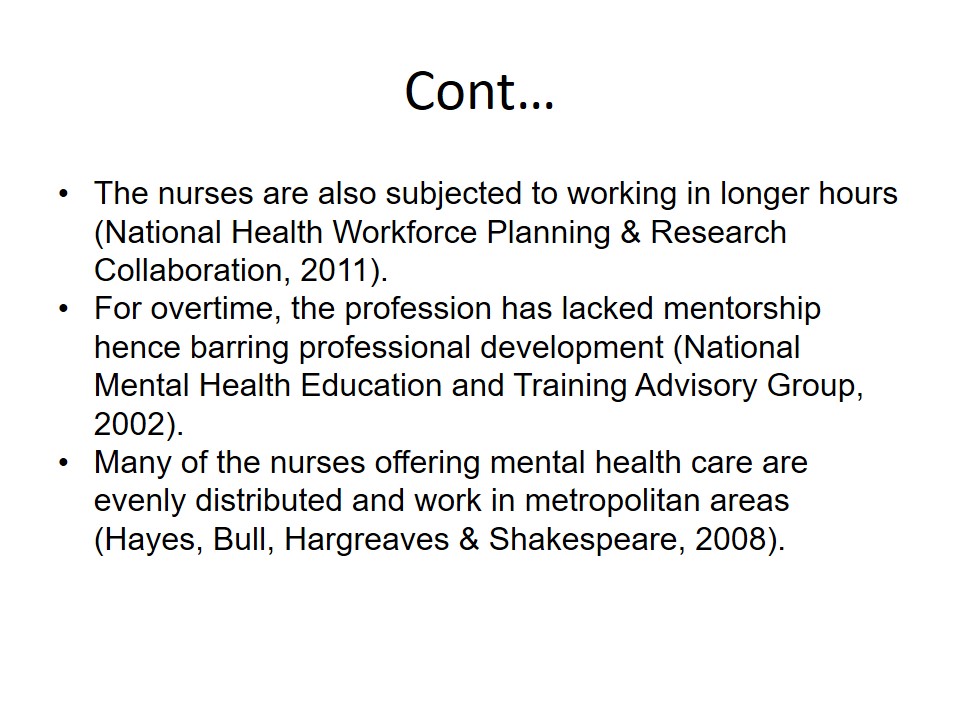
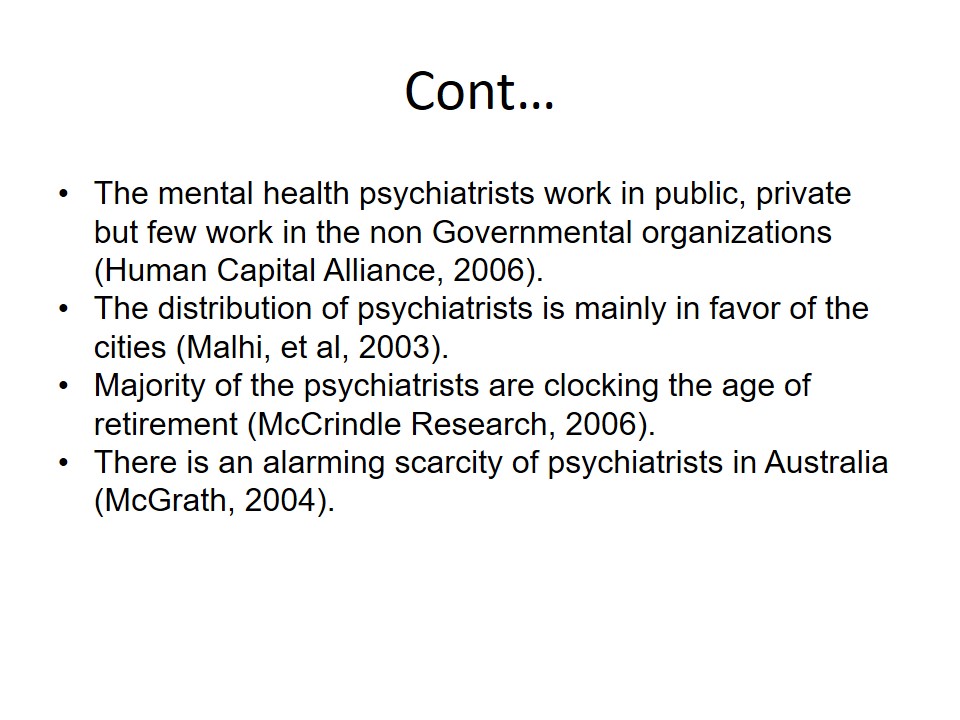

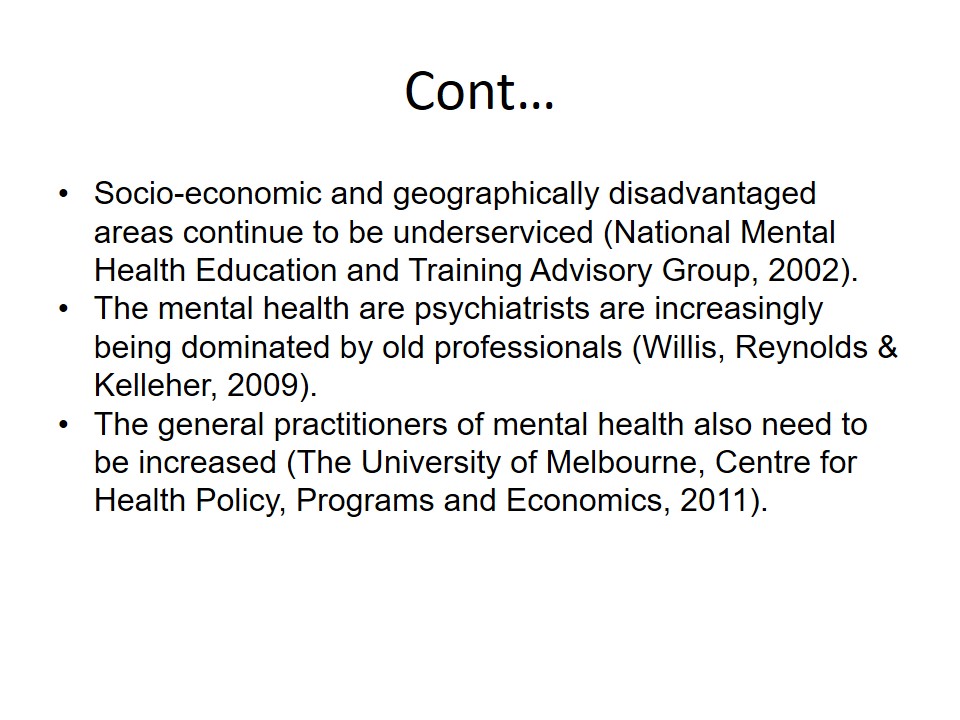
Strategies for addressing the mental health work force problems
- Government should intensify its programs on the recruitment of new workforce (Skills Australia, 2010).
- The available shortages should be remedied by recruiting psychiatrists to work in the rural and remote areas (Western Australia, Western Australia & Western Australia, 2002).
- The increasing shift of mental health practitioners to the private sector should be averted (Meadows, Singh & Grigg, 2007).
- More funding from the government for recruitment and planning of the health practitioners (National Mental Health Education and Training Advisory Group, 2002).
- The support in universities in facilitating undergraduate training for the practitioners (Meadows, Singh & Grigg, 2007).
- The outreach can be further extended to reach in high schools so as to tap the career from a early stage (National Mental Health Education and Training Advisory Group, 2002).
- Motivational incentives to the mental health practitioners to make them work in the rural areas is equally important (Human Capital Alliance, 2006).
- The incentives can be in form of allowances and promotions (Meadows, Singh & Grigg, 2007).
- The choice of a government supported strategy is based on the fact that government has more resources to support the workforce (National Health Workforce Planning & Research Collaboration, 2011).
- The other strategy based on convincing the high school students to choose the mental health careers is based on having an early orientation to the career.
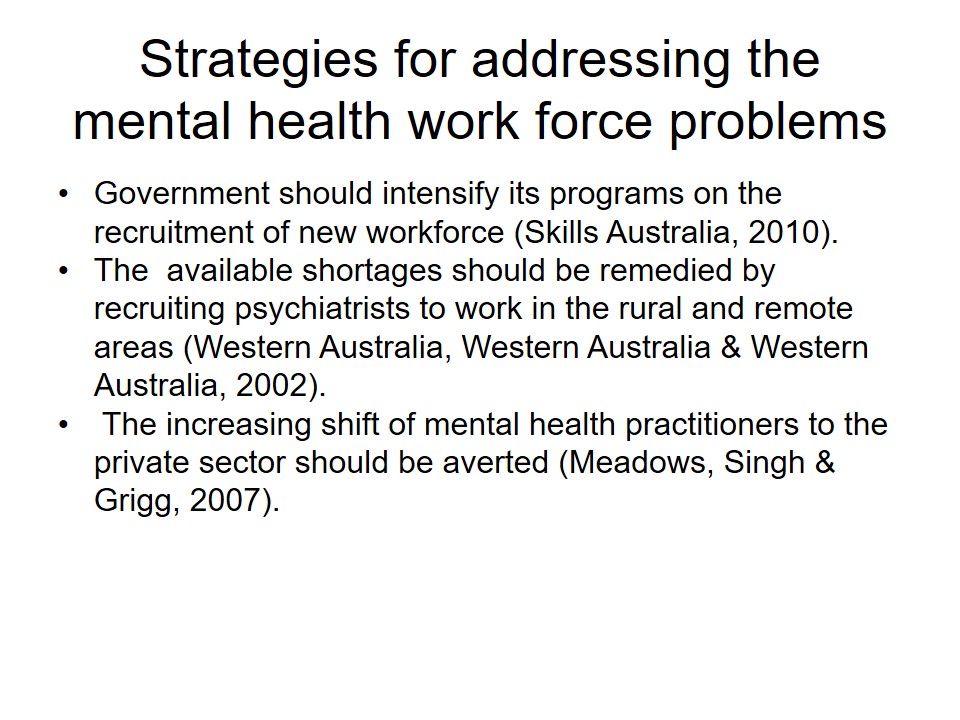
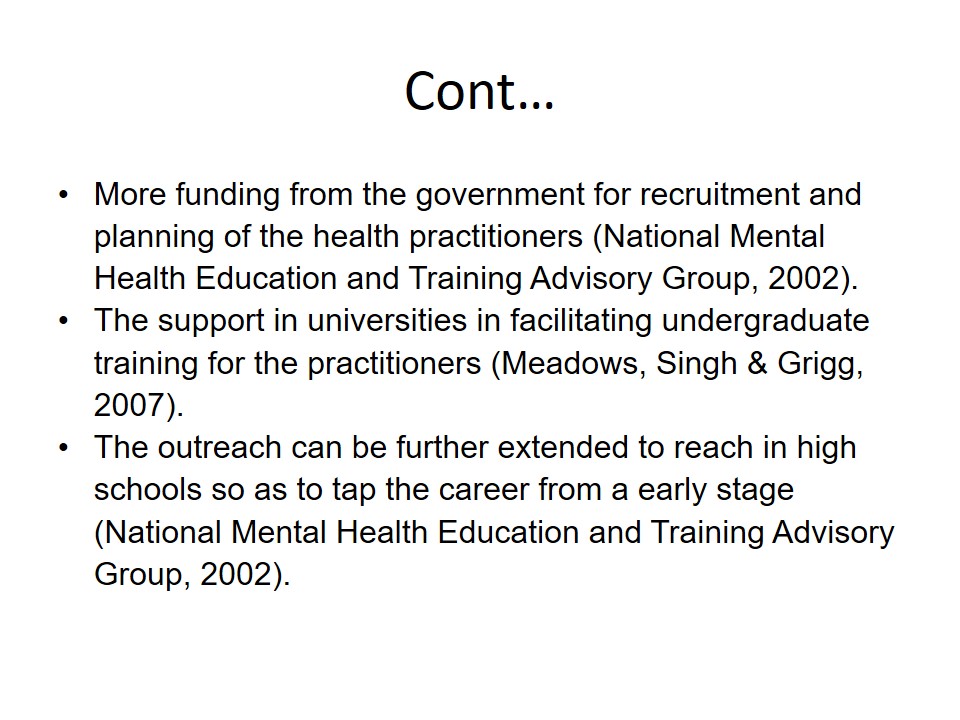
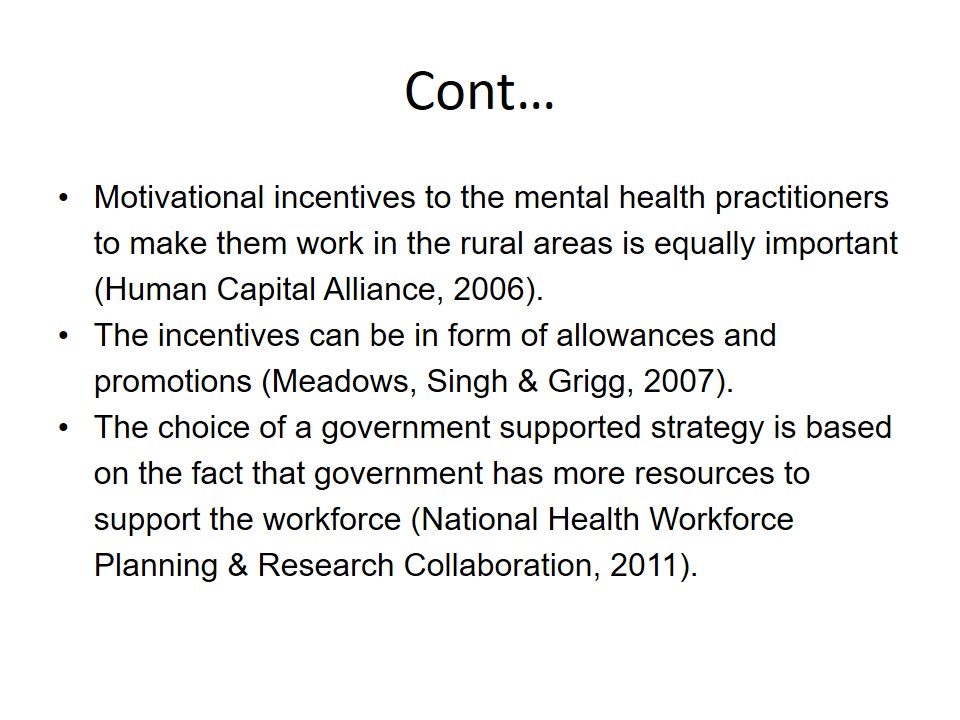
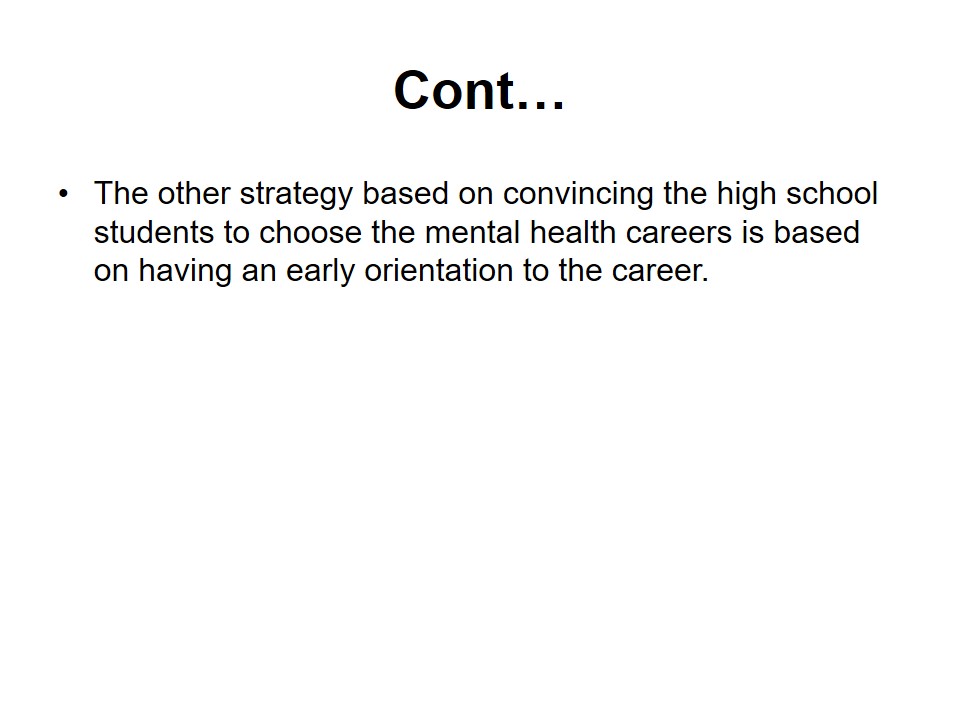
Conclusion
- Mental health is a critical area in the provision of healthcare.
- There is a need to address the unbalanced way where more practitioners are in the private sector
- This can be achieved by better pay and other allowances in the public sector.
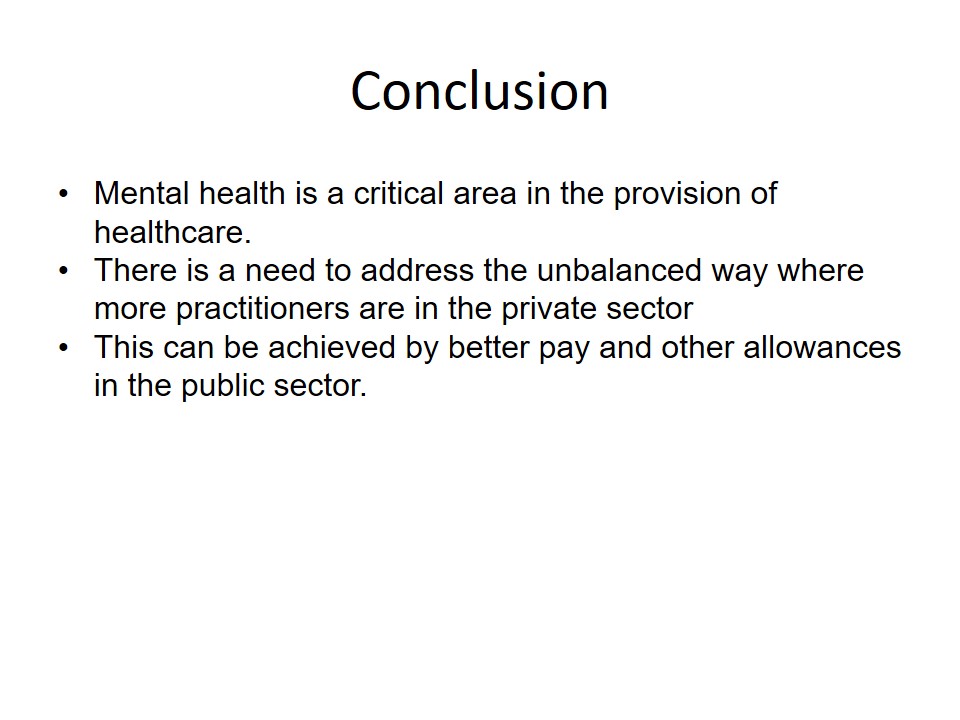
References
- Australian Indigenous Health Info Net. (2011). NSW Aboriginal mental health worker training program. Web.
- Beyond blue. (2010). The beyond blue Aboriginal and Torres Strait Islander Health Strategic Framework. Web.
- Community Services & Health Industry Skills Council. (2010). Community Services Training Package. Web.
- Hayes, R., Bull, B., Hargreaves, K., & Shakespeare, K. (2008). A survey of the recruitment and retention issues for occupational therapists working clinically in mental health. Australian Occupational Therapy Journal, 55, 12–22.
- Human Capital Alliance. (2006). Recruitment and retention of allied health professionals in Victoria.
- Malhi, et al. (2003). Toward psychiatry among students entering medical school, ActaPsychiatricaScandinavica, 107, 6: 424–429.
- McCrindle Research. (2006). New generations at work: attracting, recruiting and training Generation Y.
- McGrath, B.P. (2004). Integration of overseas-trained doctors into Australian medical workforce, Australian Medical Journal, 181, 640–642.
- Meadows, G., Singh, B., & Grigg, M. (2007). Mental health in Australia: Collaborative community practice. South Melbourne, Vic: Oxford University Press.
- Mental Health Consumer Outcomes Task Force. (1991). Mental Health Statement of Rights and Responsibilities. Web.
- Mental Health Workforce Advisory Committee. (2008). Mental Health Workforce: Supply of Mental Health Nurses. Web.
- Mental Health Workforce Advisory Committee. (2008). Mental Health Workforce: Supply of Psychiatrists. Web.
- National Health Workforce Planning & Research Collaboration. (2011). Mental Health Non-government Organisation Workforce Study. Web.
- National Mental Health Education and Training Advisory Group. (2002). National Practice Standards for the Mental Health Workforce. Web.
- National Health Workforce Planning & Research Collaboration. (2011). Mental Health Non-government Organisation Workforce Study. Web.
- National Mental Health Education and Training Advisory Group. (2002). National Practice Standards for the Mental Health Workforce. Web.
- Skills Australia. (2010). Australian Workforce Futures—A National Workforce Development Strategy, Commonwealth of Australia. Web.
- The University of Melbourne, Centre for Health Policy, Programs and Economics. (2011). Evaluation of the Better Access to Psychiatrists, Psychologists and General Practitioners through the Medicare Benefits Schedule Initiative: Summative Evaluation. Web.
- Western Australia, Western Australia, & Western Australia. (2002). Mental health promotion and illness prevention policy. East Perth, W.A: Office of Mental Health, Dept. of Health, Government of Western Australia.
- Willis, E., Reynolds, L., & Keleher, H. (2009). Understanding the Australian health care system. Sydney: Churchill Livingstone/Elsevier.